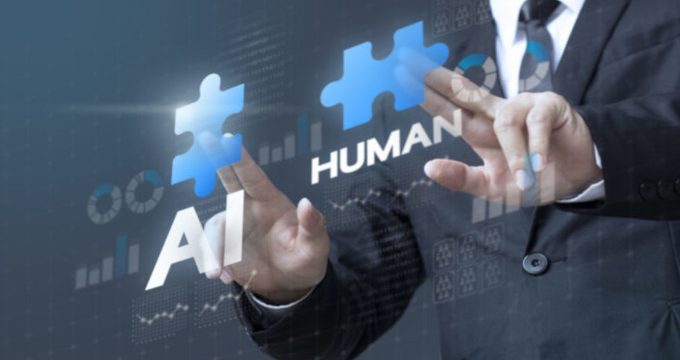Corporate training is undergoing digital transformation just like any other industry these days. Given the exponential growth of technology adoption, the shelf life of workers’ skills is now shorter than ever before. In this article, we will take a closer look at how AI in corporate training helps businesses to fill the employee skills gap and increase the efficiency of corporate training.
How AI Transforms Corporate Training
Al already has a proven track record of transforming traditional academia. The stage for its adoption in corporate learning and development (L&D) has already been set by trends like personalized learning and a need to constantly upskill the workforce. A digital shift caused by the COVID-19 pandemic has widened the skills gap and has created an urgent demand to apply technologies like AI in corporate training and onboarding.
Read also: Top 5 Reasons To Embrace E-Learning
So what are the applications of AI in corporate L&D? Below are some of the most vivid examples.
AI In Employee Onboarding
New employees usually need time to adapt to a new workplace and to get a grasp on the corporate culture and specifics. That’s why onboarding is so important: it facilitates the adaptation and helps employees reach optimal efficiency over the short time-span. As a rule, though, onboarding is a routine process of answering repetitive questions, and an AI-chatbot could easily handle this task. On top of that image recognition technology can be used to request and scan employee documents such as diplomas, IDs, and certificates.
Automated onboarding tools gain higher significance in the post-COVID reality since they enable companies to onboard new employees regardless of their physical location. In the post-pandemic world, when remote work is a new normal, AI helps businesses maintain a continuous recruiting process.
AI in Personalized Education
Personalized education is a growing trend these days, moreover, it’s one of the things that Gen Z expects from the employers. Traditional learning courses are perceived as dull, boring, and lacking connection with employee’s individual needs. Artificial intelligence, on the other hand, can help HR teams create personalized learning content and effectively fill employee skills gaps.
On top of that, AI solutions can be trained to be totally unbiased as to age, gender, and race of employees, and ensure fairness and inclusion.
AI in Social Learning
Collaborative learning and social learning when people team up around the same goal and learn from each other is one of the most effective ways of delivering corporate training. L&D workers can use AI to analyze the level of employees’ collaboration and engagement and suggest new ways for educators to make this collaboration more engaging and meaningful. AI is capable of automatically forming groups based on students’ learning styles and skill sets. It can also automatically moderate discussions and identify students struggling with mastering certain skills or communicating with their peers.
Read also: AI In Education: Past, Present, And Future
AI in Microlearning
Microlearning is delivering content in small portions, exactly when workers have time to learn and in the most appropriate form. What’s challenging about microlearning adoption is that such learning content is extremely difficult to create. Humans will have to spend hours on meticulously crafting microlearning programs and sifting through thousands of topics, while AI can effectively compose microlearning and personalized learning content.
Coupled with AV and VR, AI is capable of creating truly captivating learning experiences by immersing employees in simulated environments and helping them instantly learn how to apply new skills.
AI in Performance Assessment
Today’s learning, training, and development initiatives are hardly possible without measuring and evaluating their efficiency. By using AI and Machine Learning, educators can carry out complex analyses on all levels – from assessing the performance of individual employees to measuring the outcomes of large-scale corporate education programs. Moreover, AI can analyze the trainers’ knowledge and skills as well and thus carry out unbiased evaluations.
Employee assessment usually includes two steps:
– Pre-training evaluation aimed at identifying employee skills level and skills gaps– Post-training evaluation in order to measure if an employee has reached his/her learning objectives. AI solutions can carry out such assessments after each training session.
As such, these AI facets are rarely implemented separately. They are, as a rule, a part of an integrated employee training system. At VARTEQ we offer you AI tools for building both long and short-term training programs helping you effectively upskill your workforce and ensure continuous employee training and development. Faster employee onboarding, just-in-time training, micro-learning, mobile deployment, and personalized on-demand training – our expertise enables you to build your own employee learning platform tailored to your company’s needs and objectives.
Read also: 6 Mistakes To Avoid When Launching Corporate E-Learning Initiatives
Ready to implement AI-driven solutions for corporate training? Contact our expert team for a free consultation!

